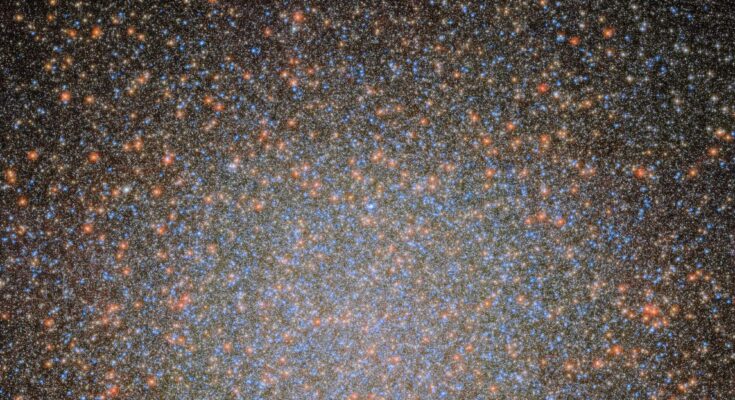Astronomers have used the Hubble Space Telescope to find the closest massive black hole to Earth. This black hole is a huge one, known as an “intermediate-mass black hole.” It’s important because it helps scientists understand how smaller black holes turn into supermassive ones.
This black hole is about 8,200 times the mass of our sun. It is much bigger than small black holes, which are 5 to 100 times the mass of the sun. However, it is also not as large as supermassive black holes, which can be millions or billions of times more expansive.
For comparison, the closest small black hole to us is called Gaia-BH1, located 1,560 light-years away from Earth, as reported by Space.
The newly discovered intermediate-mass black hole is located in a group of about ten million stars called Omega Centauri. This cluster is around 18,000 light-years away from Earth.
Newly found “frozen” black hole stopped growing
The “frozen” black hole seems to have stopped growing. This supports the idea that Omega Centauri is what’s left of an ancient galaxy consumed by our own Milky Way.
It also suggests that Omega Centauri is actually the core of a small galaxy whose growth was halted when the Milky Way absorbed it. If this hadn’t happened, the black hole might have grown to become a supermassive black hole, similar to the Milky Way’s own supermassive black hole, Sagittarius A*.
Sagittarius A* is 4.3 million times the mass of the sun and is 27,000 light-years from Earth, according to Space.
Scientists have long understood that black holes come in different sizes. Stellar-mass black holes form when stars at least eight times the size of our sun collapse. However, the origins of supermassive black holes must be different. This is because no star is big enough to collapse and create a leftover mass millions of times that of the sun.
Supermassive black holes born by merging of larger and larger black holes
Scientists suppose that supermassive black holes form and grow through a series of mergers of increasingly larger black holes. This idea is supported by the detection of gravitational waves, which are ripples in spacetime created by black hole mergers.
This merging process and the significant difference in size between stellar-mass black holes and supermassive black holes indicate there should be a group of mid-size black holes.
However, intermediate-mass black holes, which are a few hundred to a few thousand times the mass of the sun, are hard to find. Like all black holes, they have outer boundaries known as event horizons.
The event horizon is where a black hole’s gravity is so strong that not even light can escape. This makes black holes invisible unless they have nearby matter to consume, which glows as it heats up.



